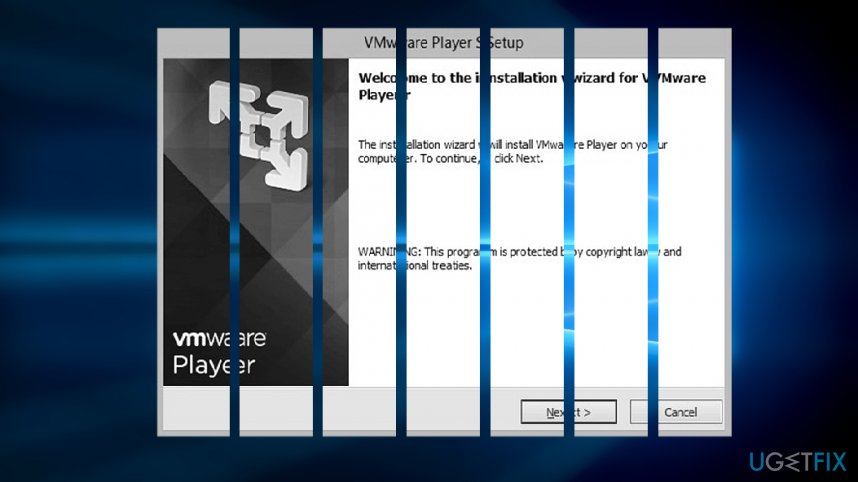

- #Uninstall vmware fusion and virtual machines license key
- #Uninstall vmware fusion and virtual machines serial number
- #Uninstall vmware fusion and virtual machines update
- #Uninstall vmware fusion and virtual machines registration
- #Uninstall vmware fusion and virtual machines software
Marko Jung discussed this at the "Extension Attributes" and "The College Challenge - Macs at Oxford" sessions from JNUC 2012.īasically he created an Extension Attribute that you manually typed the VMWare Fusion serial number into, then you create a policy that installs VMWare Fusion that runs some sort of post install script that uses the JSS API to look up the serial number from the Extension Attribute for the computer that you are currently on. # Office2003-XPsp3.vmwarevm = /Users/Shared/AcmeInc/Office2003-XPsp3.vmwarevm # containing the '.vmx' file so that it is handled like Fusion VMs, # it is recommended to add a '.vmwarevm' extension to the directory # Note that when deploying virtual machines from other VMware products, # extension if present) as a key, and the absolute path to the destination VM # entering its name as it is in this folder (including its '.vmwarevm'

# change the name or location of any specific virtual machine by # default destination location of virtual machines by setting the value of # which by default is /Users/Shared/Virtual Machines. # payload folder and copy them to the virtual machine destination location, # The install script will automatically locate any virtual machines in this # VMware Fusion.app = /Users/Shared/Applications/VMware Fusion-x.y.z.app # extension) as a key and the absolute path to the destination app as its value. # entering its name as it is in this folder (including its '.app' # change the name or location of any specific application by # The only reason to have an explicit entry in this section is to # applications by setting the value of 'appdir' in the section. You can change the default destination location of # folder and copy them to the application destination location, which by default # The install script will automatically locate any applications in this payload # point to your own servers see the commented-out examples below: # These URLs are set to locations at, but you can change them to # vmdir = /Users/Shared/AcmeInc/Virtual Machines # The default virtual machine install directory is /Users/Shared/Virtual Machines # You can set it to another directory like this: # The default application install directory is /Applications # Examples are given in the commented-out entries below:
#Uninstall vmware fusion and virtual machines software
# and the URLs that Fusion uses for support and software update. # This section allows you to change default directories for deployment # Unless you are certain of the behavior of your deployment tool, # "currently-logged-in" user or home directory. # the installer script on the Mac client machine without having a # Installer deployment tools such as Apple Remote Desktop can execute # as expected relative path names or shell expansions NEVER work. # Pathnames that with begin with '~/' are NOT guaranteed to work # Normal file and folder protections do not apply. # Mac client machine with super-user ("root") privileges. # The installer script that reads this file will be running on the # Be sure to carefully check the spelling of any path names you # Important notes regarding pathnames in this configuration file
#Uninstall vmware fusion and virtual machines update
# Manage software update behavior, one of: deny, allow (the default), or ask # If you wish to re-enable any of these, uncomment (remove the '#' from) any # key in the support view, you must also set a value for the getSupportURL # views would expose the license key, as this is not typically desirable
#Uninstall vmware fusion and virtual machines registration
# It also suppresses the License and Registration menu items, whose # dialogs presented to the user, such as the End-User License Agreement, # By default, this configuration suppresses Fusion's usual first-time # and enter the 25-character key separated by 4 dashes. # In the line below the section name, uncomment (remove the '#') # otherwise the application will prompt the user for it at first launch.
#Uninstall vmware fusion and virtual machines license key
# The Volume License key can be entered in this configuration file, # - Place a copy of the virtual machines you want to deploy to each client # - Place a copy of the VMware Fusion.app in this payload folder # - Enter your license key in the section below # following steps, any of which is optional: # To have a functioning Fusion Deployment Installer, do one or more of the # deployment "payload" folder i.e., the folder where this. # This configuration file applies to the items located in the Fusion # Do not use quotes in values lines beginning with '#' are comments. # Edit this file to configure your deployment. # VMware Fusion Mass Deployment Configuration file Applications/VMware Fusion.app/Contents/Library/Deploy VMware Fusion.mpkg/Contents/00Fusion_Deployment_Items/Deploy.ini Maybe this will help from VMware Fusion Professional Version 5.0.3 (1040386)


 0 kommentar(er)
0 kommentar(er)
